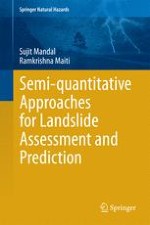2015 | OriginalPaper | Buchkapitel
4. Surface Run-off, Soil Erosion and Slope Instability
verfasst von : Sujit Mandal, Ramkrishna Maiti
Erschienen in: Semi-quantitative Approaches for Landslide Assessment and Prediction
Verlag: Springer Singapore
Aktivieren Sie unsere intelligente Suche, um passende Fachinhalte oder Patente zu finden.
Wählen Sie Textabschnitte aus um mit Künstlicher Intelligenz passenden Patente zu finden. powered by
Markieren Sie Textabschnitte, um KI-gestützt weitere passende Inhalte zu finden. powered by
